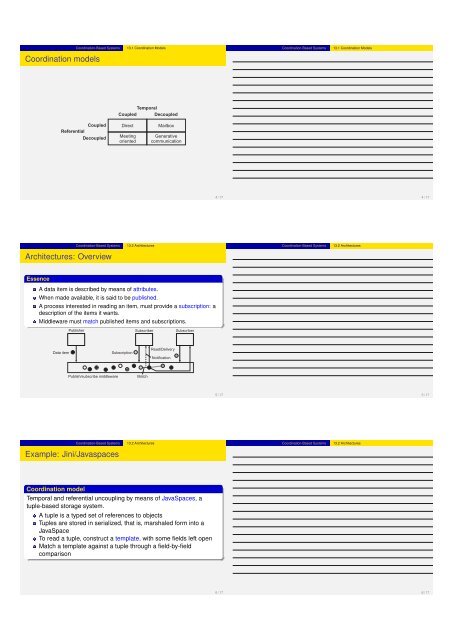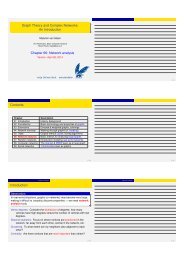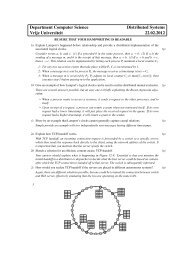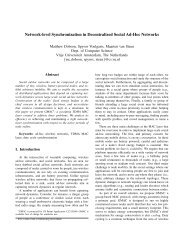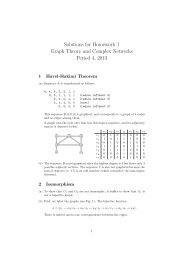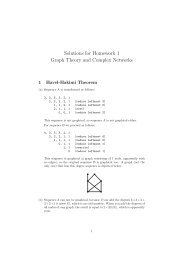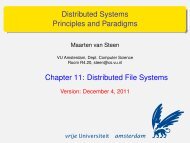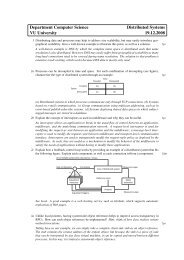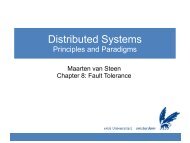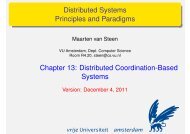Distributed Coordination-Based Systems Contents Coordination ...
Distributed Coordination-Based Systems Contents Coordination ...
Distributed Coordination-Based Systems Contents Coordination ...
Create successful ePaper yourself
Turn your PDF publications into a flip-book with our unique Google optimized e-Paper software.
<strong>Coordination</strong>-<strong>Based</strong> <strong>Systems</strong><br />
13.1 <strong>Coordination</strong> Models<br />
<strong>Coordination</strong>-<strong>Based</strong> <strong>Systems</strong><br />
13.1 <strong>Coordination</strong> Models<br />
<strong>Coordination</strong> models<br />
Temporal<br />
Coupled Decoupled<br />
Coupled<br />
Referential<br />
Decoupled<br />
Direct<br />
Meeting<br />
oriented<br />
Mailbox<br />
Generative<br />
communication<br />
4 / 17<br />
4 / 17<br />
<strong>Coordination</strong>-<strong>Based</strong> <strong>Systems</strong><br />
13.2 Architectures<br />
<strong>Coordination</strong>-<strong>Based</strong> <strong>Systems</strong><br />
13.2 Architectures<br />
Architectures: Overview<br />
Essence<br />
A data item is described by means of attributes.<br />
When made available, it is said to be published.<br />
A process interested in reading an item, must provide a subscription: a<br />
description of the items it wants.<br />
Middleware must match published items and subscriptions.<br />
Publisher<br />
Subscriber<br />
Subscriber<br />
Data item<br />
Subscription<br />
Read/Delivery<br />
Notification<br />
Publish/subscribe middleware<br />
Match<br />
5 / 17<br />
5 / 17<br />
<strong>Coordination</strong>-<strong>Based</strong> <strong>Systems</strong><br />
13.2 Architectures<br />
<strong>Coordination</strong>-<strong>Based</strong> <strong>Systems</strong><br />
13.2 Architectures<br />
Example: Jini/Javaspaces<br />
<strong>Coordination</strong> model<br />
Temporal and referential uncoupling by means of JavaSpaces, a<br />
tuple-based storage system.<br />
A tuple is a typed set of references to objects<br />
Tuples are stored in serialized, that is, marshaled form into a<br />
JavaSpace<br />
To read a tuple, construct a template, with some fields left open<br />
Match a template against a tuple through a field-by-field<br />
comparison<br />
6 / 17<br />
6 / 17


